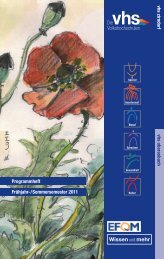Der NEUE Katalog ist da! - PRO PUBLIC GmbH
Der NEUE Katalog ist da! - PRO PUBLIC GmbH
Der NEUE Katalog ist da! - PRO PUBLIC GmbH
Create successful ePaper yourself
Turn your PDF publications into a flip-book with our unique Google optimized e-Paper software.
Serum-free Systems<br />
Instructions:<br />
A<strong>da</strong>ptation to the serumfree culture.<br />
Many cell lines can be directly transferred from the serum<br />
containing adherent culture in the serumfree culture with<br />
Panserin PX40. After a few passages with slower growth<br />
afterwards the cells reach growth rates comparable to<br />
serum containing culture conditions.<br />
Direct a<strong>da</strong>ptation to Panserin PX40:<br />
• Use adherent cells in the log phase of a serum containing<br />
culture (for example high glucose DMEM with 10 %<br />
FCS).<br />
• Evacuate serum containing medium with pipette.<br />
• Wash cell layer with PBS without Ca, Mg.<br />
• Cover cell layer with trypsin / EDTA (0.25 %, 0.02 %)<br />
(about 2 ml per T25 bottle).<br />
• Evacuate trypsin after about 1 minute.<br />
• Incubate the cells until the show a round figure and<br />
detach from the surface (after about 5 minutes).<br />
• Eliminate remaining trypsin activity with a trypsin inhibitor<br />
(1 mg/ml-solution, 1-2 ml trypsin inhibitor solution<br />
per T25 bottle).<br />
• Transfer cells into Panserin PX40 and centrifuge again.<br />
• Transfer cells into Panserin PX40 and count the cell<br />
number.<br />
• Seed 5 x 10 4 - 1 x 10 5 cells/ml in preheated Panserin<br />
PX40. Incubation at 37° C and 5% CO2 fumigation in<br />
the incubator.<br />
• Transfer cells in fresh Panserin PX40 at a confluence<br />
of about 80 %.<br />
Indirect A<strong>da</strong>ption to Panserin PX40:<br />
• Use adherent cells in the log phase of a serum containing<br />
culture (for example high glucose DMEM with 10 %<br />
FCS).<br />
• Evacuate serum containing medium with pipette.<br />
• Wash cell layer with PBS without Ca, Mg.<br />
• Cover cell layer with trypsin / EDTA (0.25 %, 0.02 %)<br />
(about 2 ml per T25 bottle).<br />
• Evacuate trypsin after about 1 minute.<br />
• Incubate the cells until the show a round figure and<br />
detach from the surface (after about 5 minutes).<br />
• Eliminate remaining trypsin activity with a trypsin inhibitor<br />
(1 mg/ml-solution, 1 - 2 ml trypsin inhibitor solution<br />
per T25 bottle).<br />
• Transfer cells into Panserin PX40 and centrifuge again.<br />
• Transfer cells into Panserin PX40 and count the cell<br />
number.<br />
• Seed 5 x 10 4 - 1 x 10 5 cells/ml in preheated Panserin<br />
PX40 with addition of 5 % FCS.<br />
• Incubation at 37 °C and 5 % CO2 fumigation in the incubator.<br />
• Transfer cells in fresh Panserin PX40 with 2 % FCS at<br />
a confluence of about 80 %.<br />
• At the next splitting steps transfer cells in to Panserin<br />
PX40 with 1 % FCS and finally with 0,1 % FCS (the same<br />
procedure as described).<br />
PANSERIN PX40/PANSERIN PX40<br />
1.48<br />
Serum-freie Systeme<br />
Gebrauchsanweisung:<br />
A<strong>da</strong>ption an die serumfreie Kultur.<br />
Viele Zelllinien können direkt aus der serumhaltigen adhärenten<br />
Kultur in eine serumfreie Kultur mit Panserin PX40<br />
überführt werden. Nach einigen Passagen mit verlangsamtem<br />
Wachstum werden häufig Wachstumsraten vergleichbar<br />
mit serumhaltiger Kultur erreicht.<br />
Direkte A<strong>da</strong>ption an Panserin PX40:<br />
• Zellen aus der serumhaltigen, adhärenten Kultur (z. B.<br />
DMEM high glucose mit 10 % FCS) aus der Logphase<br />
verwenden.<br />
• Serumhaltiges Medium mit Pipette abnehmen.<br />
• Zellrasen mit PBS ohne Ca, Mg, waschen.<br />
• Zellrasen mit Trypsin/EDTA (0,25 %, 0,02 %) überschichten<br />
(ca. 2 ml auf T25 Flasche).<br />
• Trypsin nach ca. 1 min abnehmen.<br />
• Inkubation bis sich die Zellen abrunden und vom Untergrund<br />
lösen. (nach ca. 5 min).<br />
• restliche Trypsinaktivität mit Trypsininhibitor (1mg/ml-<br />
Lösung) abstoppen (1 - 2 ml Trypsininhibitor-Lösung<br />
auf T25 Flasche).<br />
• Zellen in Panserin PX40 aufnehmen und nochmals<br />
zentrifugieren.<br />
• Zellen in Panserin PX40 aufnehmen und Zellzahl bestimmen.<br />
• 5 x 10 4 – 1 x 10 5 Zellen/ml in vorgewärmtes Panserin<br />
PX40 einsäen. Inkubation bei 37° C und 5 % CO2-Begasung<br />
im Brutschrank.<br />
• Zellen bei einer Konfluenz von ca. 80 % in frisches Pansern<br />
PX40 umsetzen.<br />
Indirekte A<strong>da</strong>ption an Panserin PX40:<br />
• Zellen aus der serumhaltigen adhärenten Kultur (z. B.<br />
DMEM high glucose mit 10 % FCS) aus der Logphase<br />
verwenden.<br />
• Serumhaltiges Medium mit Pipette abnehmen.<br />
• Zellrasen mit PBS ohne Ca, Mg, waschen.<br />
• Zellrasen mit Trypsin/EDTA (0,25 %, 0,02 %) überschichten<br />
(ca. 2 ml auf T25 Flasche).<br />
• Trypsin nach ca. 1 min abnehmen.<br />
• Inkubation bis sich die Zellen abrunden und vom Untergrund<br />
lösen. (nach ca. 5 Min).<br />
• restliche Trypsinaktivität mit Trypsininhibitor (1mg/ml-<br />
Lösung) abstoppen (1 - 2 ml Trypsininhibitor-Lösung<br />
auf T25 Flasche).<br />
• Zellen in Panserin PX40 aufnehmen und nochmals<br />
zentrifugieren.<br />
• Zellen in Panserin PX40 aufnehmen und Zellzahl bestimmen.<br />
• 5 x 10 4 – 1 x 10 5 Zellen/ml in vorgewärmtes Panserin<br />
PX40 einsäen. Zusätzlich 5 % FCS zugeben.<br />
• Inkubation bei 37 °C und 5 % CO2-Begasung im Brutschrank.<br />
• Sobald die Zellen ca. 80 % der maximalen Dichte erreicht<br />
haben, in frisches Panserin PX40 umsetzen und<br />
2 % FCS zugeben.<br />
• Beim nächsten Splitten der Zellen Panserin PX40 mit<br />
1 % FCS supplementieren und schließlich mit 0,1 %<br />
FCS (gleiche Schritte wie oben).<br />
PANSERIN PX40 500 ml P04-710PX40<br />
BIOTECH <strong>GmbH</strong><br />
<br />
1





